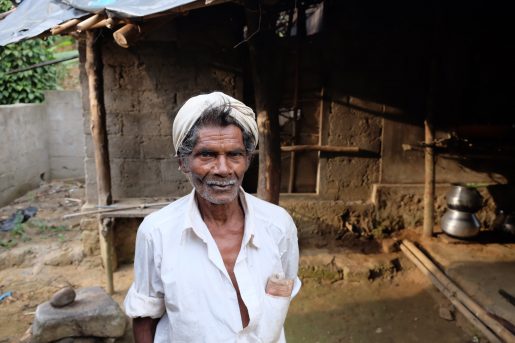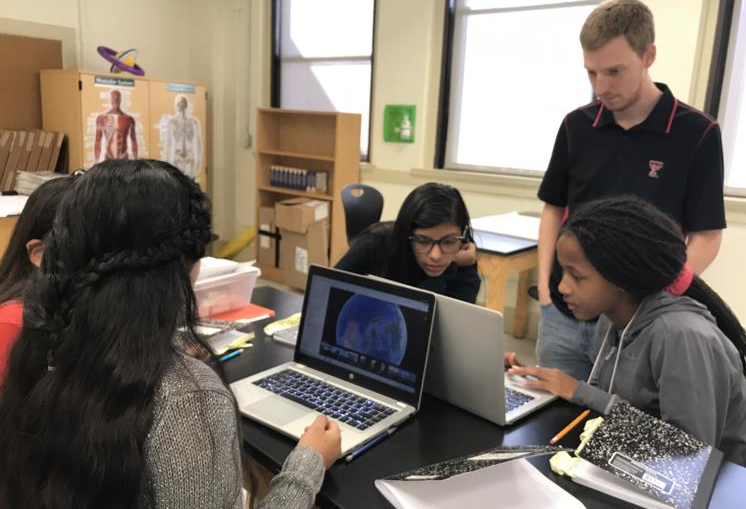Collaboration, regional focus needed for dementia care in India
This is the first of two posts from participants in Baylor College of Medicine’s National School of Tropical Medicine Summer Institute program with Baylor University
Globally, dementia affects more than 55 million people and is listed as the seventh leading cause of death, making it one of the world’s most widespread public health problems.
 Dementia advances the deterioration of cognitive function, which leads to memory loss and difficulty with reasoning and judgment. As dementia progresses to later stages, individuals may lose motor skills, experience mood swings and have trouble communicating with others.
Dementia advances the deterioration of cognitive function, which leads to memory loss and difficulty with reasoning and judgment. As dementia progresses to later stages, individuals may lose motor skills, experience mood swings and have trouble communicating with others.
Although numerous clinical advancements have been made in dementia research, there is currently no cure or efficient treatment for most patients. Dementia is not a specific disease, but rather an umbrella term that encompasses Alzheimer’s disease, vascular dementia, dementia with Lewy bodies, etc. Each type is the result of separate brain abnormalities and presents with different symptoms.
According to the World Health Organization, the global number of cases of dementia will increase to approximately 78 million in 2030 and 139 million in 2050. One country that is expected to be especially burdened is India due to its large aging population coupled with a high prevalence of vascular risk factors.
Twenty of every 1,000 elderly persons is estimated to have dementia in India. Dementia has caused India to face an economic weight of $3.4 billion dollars, according to the 2019 Global Burden of Disease study. By 2050, the study predicts a 197% increase in cases. More than 11 million people in India are expected to live with dementia with the majority in low-income areas.
One issue in rural parts of the country is a lack of awareness about the disease. Most individuals living in these communities believe that the symptoms of dementia are just a normal part of aging. Due to this lack of awareness, the treatment gap – the difference between people with the condition who need care and those who receive care – is 90%. To reduce this gap, local governments could implement culture-specific awareness programs to assist the public in understanding what dementia is and how to minimize its risks and seek help.
Intersectoral collaboration is when the collective actions of more than one specialized agency perform different roles for a common purpose, according to the National Center for Biotechnology Information. This type of collaboration could be ideal in generating awareness of dementia risks and treatment options without requiring more resources.
For example, India’s government could collaborate with an existing program, like the National Programme for Prevention and Control of Cancer, Diabetes, Cardiovascular Diseases and Stroke, to spread dementia awareness while tackling other public health issues.
A lack of proper cognitive diagnostic equipment and screening tools in rural communities is a separate hurdle. Early identification of dementia allows patients to plan while they are still able to make their own medical and financial decisions, allowing them to live a better life as the disease progresses. A further challenge to dementia care is that cognitive exams currently used by Indian doctors were originally developed in English-speaking countries for people who can read. Rural areas need tests that fit their sociocultural context and literacy levels.
The Indian Council of Medical Research-Neurocognitive Tool Box is working to develop innovative tests for both literate patients and those who can’t read, but it needs more funding. With no uniform screening, local healthcare workers must be trained on how to properly diagnose and screen at-risk individuals.
Many general hospitals and community centers have adopted the idea of “memory clinics,” which train healthcare workers to identify early signs of dementia and give advice on treatment options. While some argue that a dementia diagnosis carries a negative stigma, patients and their families typically feel a sense of relief that their change in behavior is due to a medical condition and not simply “being difficult” or “growing old.” Increased screening and diagnostic use can reduce the burden dementia causes patients and their families.
Regional-specific research on dementia also is needed. The Indian Journal of Psychiatry published nine research articles on dementia from 1958 to 2009. Much of the current research on dementia in India consists of small-scale independent studies. Regional variance within communities in India calls for analysis on a region-specific level, which will allow organizations and government departments to see which interventions are most effective in low-resourced areas and how to address the complex local challenges associated with dementia.
Tackling the growing public health issue of dementia is not something that can be accomplished exclusively on a policy, organizational or individual level. It requires multidisciplinary collaboration among different groups of experts to work toward a dementia-free India.
By Nair Adithya



